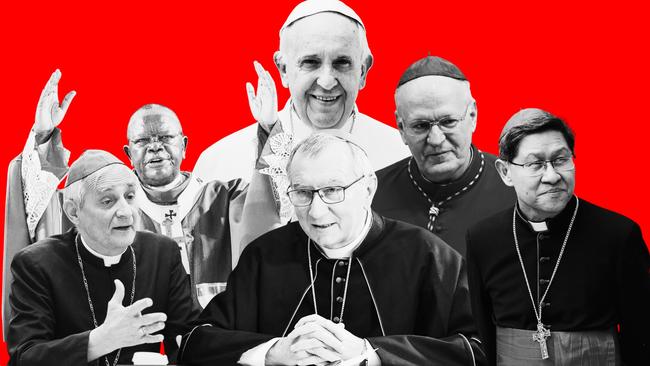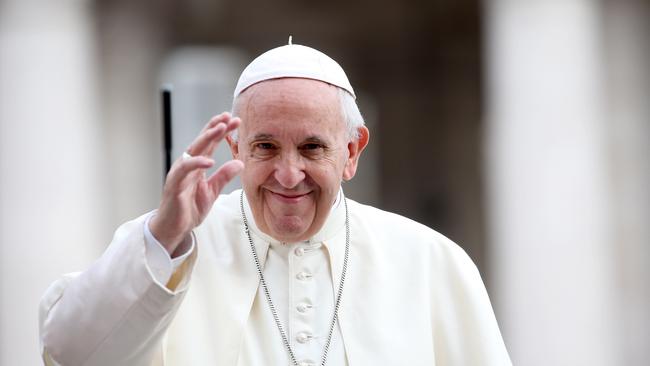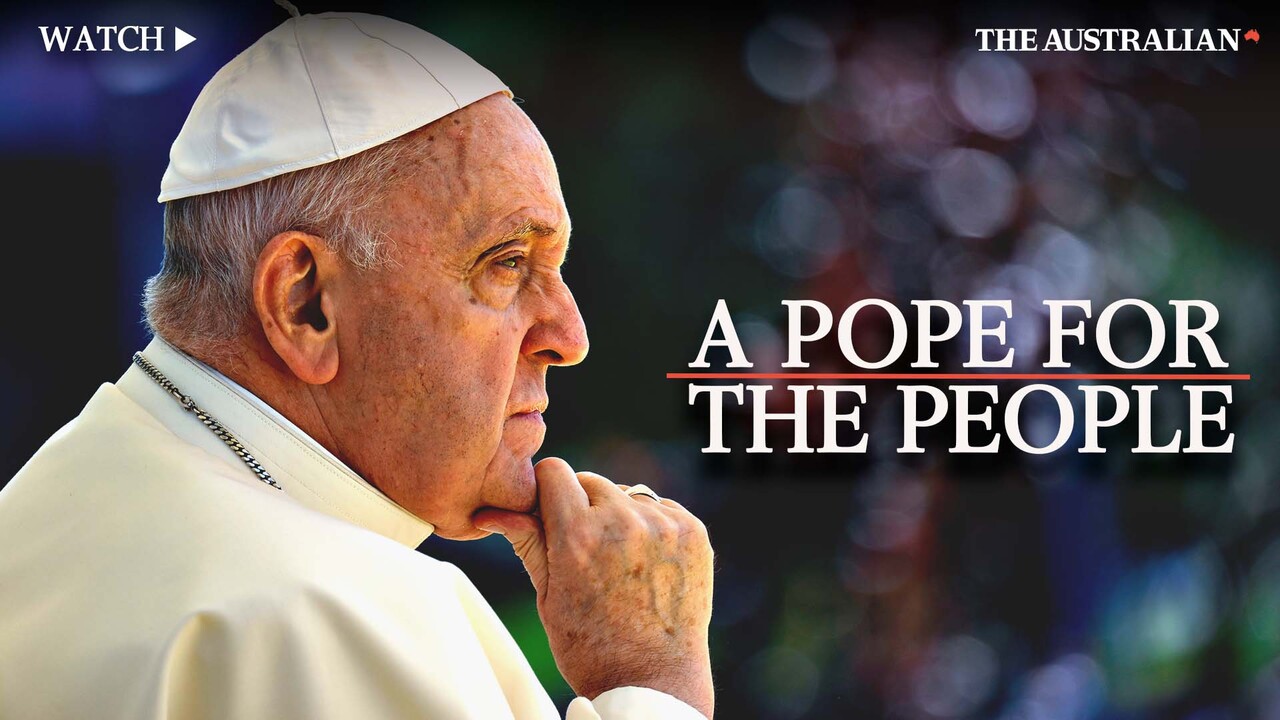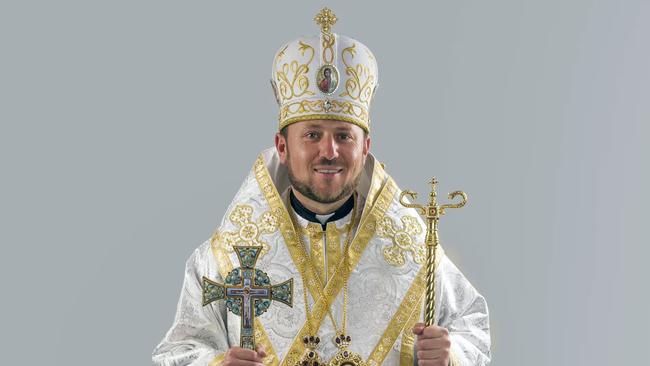Conclave and contenders: Who could be next the pope?
Francis studiously avoided anointing a successor, but a career diplomat tops the list of potential papal candidates now circulating in Rome.

On February 6, just a few days before he was admitted to hospital, Pope Francis confused even the most seasoned Vatican observers by extending the five-year term of Giovanni Battista Re, the Dean of the College of Cardinals.
Elected by just 12 cardinal bishops, the Vatican’s highest-ranking clerics, the dean is primarily an honorary position with few clear functions – until a pope dies and he must take on the secret and ancient process of leading the conclave that elects a new pope.
Unlike the fictional dean played by Ralph Fiennes in the award-winning film Conclave, however, the Italian cardinal Re, at 91, is too old to enter the Sistine Chapel and vote in the conclave. Five brother cardinal bishops, including his Argentine deputy, Cardinal Leonardo Sandri, 81, are in the same boat.

So why did Francis, who studiously avoided anointing a successor, delay the college election at the eleventh hour and when the cardinal bishops, including a surprise American addition to their ranks, the moderate Cardinal Robert Prevost, were already reportedly in Rome ready to vote?

Tradition has it that if the dean is too old to take on the conclave role, his deputy steps in, but if he too is over 80, the responsibility automatically devolves in order of seniority to the next eligible cardinal bishop.
With the death of Francis, the mantle falls automatically onto the shoulders of Pietro Parolin, the Vatican’s Secretary of State. A career diplomat, Parolin is the bookies’ favourite and regularly tops the list of potential papal candidates circulating in Rome.
While his star has dimmed considerably in the wake of a London property scandal and his personal association with the controversial Vatican-China deal which gave Chinese Communist Party officials input into papal appointments, he is still regarded as a skilled mediator and a calm figure capable of reducing tensions in the wake of a pontificate noted for controversial and sometimes divisive reform.
Francis’s move to side-step a formal election, says Vatican analyst Andrea Gagliarducci, could be seen as an attempt at authority and influence. The delay ensures that Re, not Parolin, leads the all-important pre-conclave meetings in which all cardinals – including those too old to vote but still influential – are able to meet and discuss the church’s needs and the qualities of a new pontiff.
“One can only speculate as to why, but one reason seems to be that Cardinal Parolin’s authority could be decisive in the election of the new pope. Is this a way for Pope Francis to express dislike of the potential [other] choices of the College of Cardinals? It is possible, indeed likely,” he said.
Ed Condon, canon lawyer and The Pillar co-founder, says the delay was odd, although notes that tension had been reported between Francis and the college deputy, Cardinal Sandri, in the past. If the election had proceeded and Parolin elected formally over the deputy, he would have access to both arenas, pre and during the conclave, to make a compelling impression on his brother cardinals similar to the “memorable and powerful intervention he made for fidelity and divine revelation” during closed-door sessions in the 2023 synod.

“If Francis (was) pushing Parolin forward to lead the College of Cardinals, and with it the next conclave, it would be the closest this pope … (came) to winking at a possible successor – and that could in itself trigger interesting and perhaps unintended consequences.”
Francis’s influence
Francis had for years carefully avoided the emergence or encouragement of an obvious successor, with some even arguing he went a step further and deliberately cultivated a field of rival candidates.
Despite this studious abstention, every time a new clutch of prelates was promoted, Francis’s choices were analysed feverishly as the pontiff exerted his influence on the group that will select his successor. This is even though all the cardinals appointed by Francis are so-called Bergoglian progressives, with the most notable example, the arch-conservative German cardinal Gerhard Muller, among the first of his appointments in 2014, promoted in the same crop as the progressive Parolin.

More than 60 per cent of the 135 cardinals eligible to vote in the conclave are Francis’s appointments, a statistical watershed which suggests his successor will at the very least share his style and vision of the church in the 21st century.
The reality, however, is far more complex and unpredictable, as history shows that conclaves often exercise a logic of their own and can come to decisions that owe little to the pope who created them.
Alberto Melloni, a church historian with the University of Modena in Reggio Emilia, believes that the very idea that a pope can influence the election of his successor is not realistic – and nor was it part of Francis’s agenda.
As an Argentinian born a world away from Rome, geographic diversity was more important to Francis, and he showed a determination to give voice to what he called the “cardinals from the peripheries”, choosing more than 20 archbishops from nations that have very small Catholic populations or had never had a cardinal before, among them Myanmar, Mongolia, Haiti, the Central African Republic and even Iran.
The last clutch of clerics given the red hat by Pope Francis in December created a particular stir among Vatican watchers as they appeared to deliberately avoid the archbishops of the historically important cities that have dominated in the past. In the United States, the Archbishop of Los Angeles was left out in the cold while his colleague in San Diego was brought into the college.
In Italy the Archbishop of Bologna was made a cardinal while his Milanese brother was not. In Australia, Pope Francis appointed the Ukrainian-bornMykola Bychock, bypassing the archbishops of Melbourne, Perth and Sydney, and making him the youngest cardinal by far at 44.

“Francis realises that the church needs to decentralise itself and look at the geopolitical peripheries first because it is in those regions that you find disintegration of faith and marginalisation,” writes Massimo Faggioli, a professor of theology and religious studies at Villanova University in Philadelphia who has studied Francis’s papacy.
“He recognises that the most important sign of our times is the mass migration of populations, refugees and migrants, because of persecution and poverty. He sees a world of people who are resettling and not a world of nations of settlers.”
Ninety-three countries have cardinals who can vote in a conclave, according to the Cardinalium Collegii website, compared with fewer than 50 countries when Francis was elected in 2013.
Unlike previous popes, however, Francis very rarely invited the entire college to Rome for consultation, and this, coupled with their vast, new geographic spread, means they know little of each other and may have never met face-to-face.
John Thavis, a former Rome bureau chief for the Catholic News Service who has reported on three papacies, told Reuters that this will also serve to limit the amount of pre-conclave manoeuvring.
“The pope’s biggest influence on a future conclave will be in broadening participation and making the election of a pope a more global event,” he said.
Struggle of ideals
Ultimately, just as the perennial struggle between progressives and conservatives has plagued global Catholicism at least since the death of John Paul II in 2005 – and perhaps even going back to the Second Vatican Council of the mid-1960s – it will also be the defining tension that will occupy the minds of cardinals in the next conclave.
Women’s ordination, communion for divorcees, the blessing of same-sex couples and the use of the Latin Mass were recurring motifs of Francis’s papacy – and will continue to be for the next pope, not just because they continue to polarise the church’s hierarchy but because the 1.4 billion Catholic faithful worldwide can’t agree on them either.
And while popes in the past could simply revert to notions of papal infallibility – demanding Catholics inside and outside the Holy See obey their will, Francis was caught between a 21st-century rock and a hard place, unable to satisfy conservatives who believe he went too far nor the progressive wing frustrated that he did not reform the church enough.
With a 138-strong conclave as it stands today, at least 92 votes will be required to win the papacy – 16 more than were needed to elect Francis – and the race will be close and tight.
While overt campaigning is frowned upon, geopolitical realities and the new tensions between America and Europe will, without doubt, play a part. Compromise may well be a driving force to install a moderate conservative – or conservative progressive – to the papacy.
“The cardinals who meet to elect (Francis’s) successor will come from further afield than ever before – and know each other much less than ever before,” says Ed Condon.
“Under Francis, the practice of naming cardinals from out-of-the-way places, while often passing over more bishops in traditionally high-profile archdioceses, has certainly diversified the college. But the other side of that coin is the cardinal electors are in large part a mystery even to each other. What that means for a conclave is the few big-name candidates like Cardinal Parolin start with a huge selection bias in their favour – you can only vote for names you know – but if there isn’t a speedy election it means the field is wide open for a true surprise.”

According to the bookies, the shortest odds are with Pietro Parolin – four to one to become the new pope. But who are the cardinals considered serious frontrunners by Vatican observers from the list of 22 “papabili” – literally meaning popeable – named on the College of Cardinals website?
First of all the “progressives”:
Cardinal Matteo Zuppi, 69, president of the Italian Episcopal Conference and special envoy of the pope for the Ukrainian conflict, has declared himself open to the ordination of women, the blessing of same-sex marriages and an outspoken advocate of inclusivity and synodality.
Portugal’s Jose Tolentino de Mendonça, 58, also an advocate of diversity and inclusivity on social and spiritual issues.
Robert Prevost, 68, newly made a cardinal bishop, worked in Peru and is now Prefect for the Dicastery of the Bishops. He has been a powerful advocate for social and pastoral reform in the church.
Among the so-called moderates, the frontrunners are:
Pietro Parolin, 69, Secretary of State, seen as Francis’s right-hand man.
Luis Antonio Tagle, 67, one of Benedict’s last cardinal appointments, but also seen as a trusted supporter and confidant of Francis. While regarded as a moderate, he has taken progressive views on immigration and social justice, perhaps making him a strong compromise candidate.
Claudio Gugerotti, 68, Prefect for the Eastern Churches, with wide diplomatic, interfaith, multicultural and political experience.
Angel Fernandez Artime, 63, has had a long career in Catholic education, and while he has very conservative views on the education of youth, is regarded to be among the more moderate of the traditionalists.
Italian Roberto Repole, 59, one of the youngest of the cardinals, espouses conservative doctrinal views but is open to dialogue on social reform.
Domenico Battaglia, 60, from Naples, is one of the most recently appointed cardinals and has gained a popular following although seen to be dark horse candidate.
The conservatives:
While Gerhard Muller, 77, is a significant figure in the traditionalist camp and is listed as “papabile”, he is not seen as a conservative frontrunner. However, some observers have noted that his friendship with several more moderate cardinals, including Turin’s Roberto Repole, Spain’s Angel Fernandez Artie and Naples’s Domenico Battaglia, could throw up some surprises.
Peter Erdo from Hungary, president of the European Bishops Conference, is critical of gay marriage and European nations accepting refugees, and has forged strong ties with African bishops.
Ambongo Besungu from the Democratic Republic of the Congo emerged as a prominent conservative in January last year when he flew to Rome to deliver African bishops’ complaints about Fiducia Supplicans, which allowed the blessing of unmarried same-sex couples.
Dutch cardinal Wim Eijk has been a trenchant critic of Pope Francis on social issues, interfaith dialogue and of civil remarriage for couples after divorce.


To join the conversation, please log in. Don't have an account? Register
Join the conversation, you are commenting as Logout